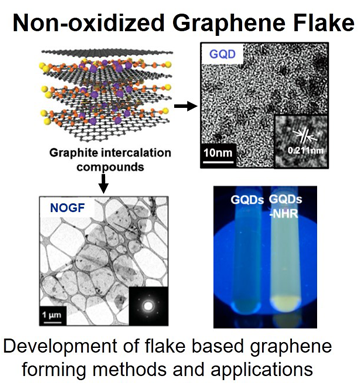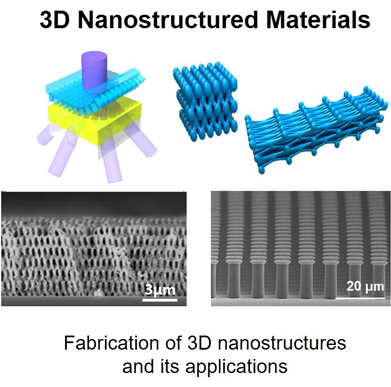Welcome to Jeon's Research Group
Our research goals are exploring novel electronic and optical materials and employing those materials in real world applications. Current materials of interest are carbon based nanoelectronic materials and optical metamaterials. The potential fields of applications are flexible electronics, molecular electronics, artificial muscle, MEMS/NEMS microfluidic devices, novel photonic devices, and many others.
- 1. Low-dimensional carbon nanomaterials: Since the discovery of electrically conducting polymers (a discovery that led to the 2000 Nobel prize in chemistry), conjugated carbon based materials has been investigated for semiconducting, conducting, insulating and even light emitting layers of electronic and optoelectronic devices. The finding of fullerene in 1980s and carbon nanotube in early 1990s exploded the research field and recently found graphene filled the vacancy of 2D nanoelectronic material. The light-weight, flexibility, and supreme electronic and mechanical properties promise the usefulness of these materials to flexible electronics and mechanical and biological systems.
- 2. Three-dimensional nanostructured materials: The advent of nanoscience and technology is greatly indebted to the established techniques of micro/nanopatterning in past decades. Still, most of the known patterning techniques are optimized for 1D or 2D planar structures. Various 3D nanopatterning techniques, especially soft lithography based techniques, have been proposed and suggest functionally designed 3D structures that nature never provides. As 3D crystal structures in atomic scale govern basic material properties, the artificial 3D structures in micro- and nano-scale lead to new material properties such as photonic bandgap, negative refractive index, and the transport of energy and fluidics.



